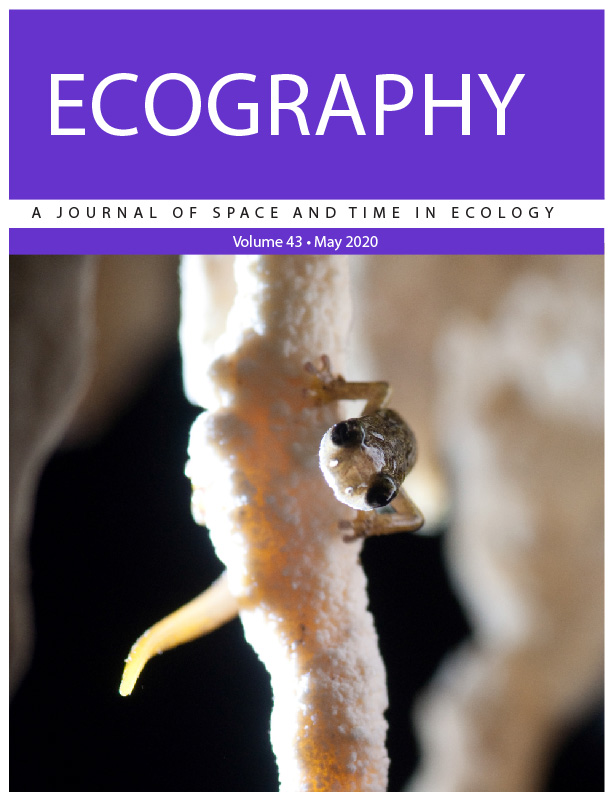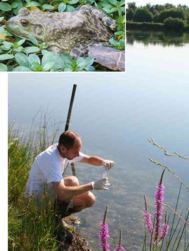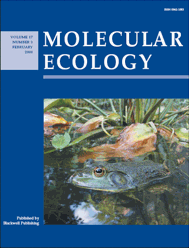| home | complete publication list |
To respect copyright laws, request permission by email (francesco.ficetola [AT] gmail.com) before downloading PDFs
Best publications:
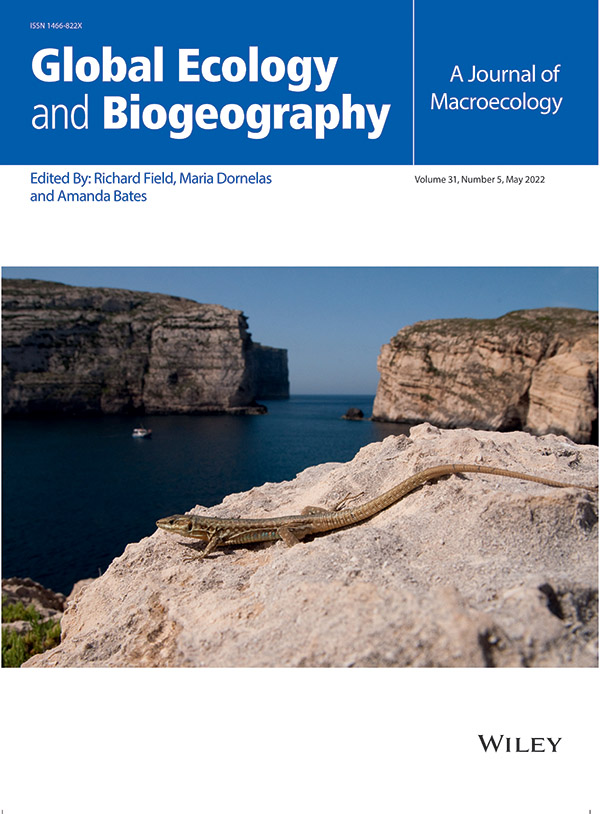 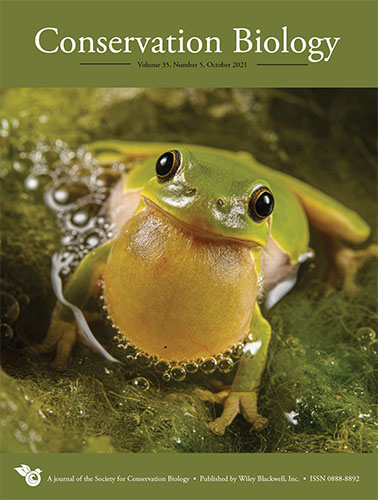 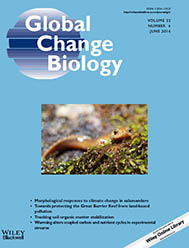 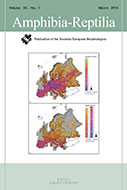 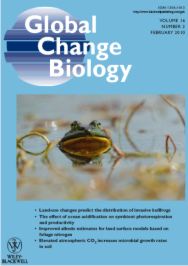
|
Cantera, I., Carteron, A., Guerrieri, A., Marta, S., Bonin, A., Ambrosini, R. [...] & Ficetola, G.F., in press. The importance of species addition versus replacement varies over succession in plant communities after glacial retreat. Nature Plants 10, 256-267. Guerrieri, A., Cantera, I., Marta, S., Bonin, A., Carteron, A., Ambrosini, R., Caccianiga, M. [...] & Ficetola, G.F. 2024. Local climate modulates the development of soil nematode communities after glacier retreat. Global Change Biology 30. e17057. Marta, S., Zimmer, A., Caccianiga, M., Gobbi, M., Ambrosini, R., Azzoni, R.S., Gili, F., Pittino, F., Thuiller, W., Provenzale, A., Ficetola, G.F., 2023. Heterogeneous changes of soil microclimate in high mountains and glacier forelands. Nature Communications 14, 5306 Ficetola, G.F., Taberlet, P., 2023. Towards exhaustive community ecology via DNA metabarcoding. Molecular Ecology, https://doi.org/10.1111/mec.16881. Ficetola, G.F. et al. 2021. Dynamics of ecological communities following current retreat of glaciers. Annual review of Ecology Evolution and Systematics 52, 405-426. Falaschi, M., Giachello, S., Lo Parrino, E., Muraro, M., Manenti, R., Ficetola, G.F., 2021. Long-term drivers of survival and colonization dynamics in spatially-structured amphibian populations. Conservation Biology 35, 1530–1539. Definitive version available at https://conbio.onlinelibrary.wiley.com/ Khedim, N., Cécillon, L., ... & Ficetola, G.F., 2021. Topsoil organic matter build-up in glacier forelands around the world. Global Change Biology in press, DOI: 10.1111/gcb.15496. Melotto, A., Manenti, R., Ficetola, G.F., 2020. Rapid adaptation to invasive predators overwhelms natural gradients of intraspecific variation. Nature Communications 11, 3608. Read our blog story at the Nature EcoEvo Community! Hanson, J.O., Rhodes, J.R., Butchart, S.H.M., Buchanan, G., Rondinini, C., Ficetola, G.F., Fuller, R.A., 2020. Global conservation of species’ niches. Nature 580, 232-234 Ficetola, F., Lunghi, E., Manenti, R., 2020. Microhabitat analyses support relationships between niche breadth and range size when spatial autocorrelation is strong. Ecography 43, 724–734. Cover article! Falaschi, M., Manenti, R., Thuiller, W., Ficetola, G.F., 2019. Continental-scale determinants of population trends in European amphibians and reptiles. Global Change Biology 25, 3504-3515. Definitive verion available at www.wiley.com Ficetola, G.F., Lunghi, E., Cimmaruta, R., Manenti, R., 2019. Transgressive niche across a salamander hybrid zone revealed by microhabitat analyses. Journal of Biogeography 46, 1342–1354. Definitive verion available at www.wiley.com Ficetola, G.F. et al. 2018. DNA from lake sediments reveals long-term ecosystem changes after a biological invasion. Science Advances 4, eaar4292. See the news on the Washington Post Ficetola, G.F., E. Lunghi, C. Canedoli, E. Padoa-Schioppa, R. Pennati, Manenti, R.. 2018. Differences between microhabitat and broad-scale patterns of niche evolution in terrestrial salamanders, Scientific Reports 8: 10575. DOI:10.1038/s41598-018-28796-x Ficetola, G.F., Mazel, F., Thuiller, W., 2017. Global determinants of zoogeographical boundaries. Nature Ecology & Evolution, DOI: 10.1038/s41559-016-0089. See News and Views by Alexander Antonelli. Ficetola, G.F., Maiorano, L., 2016. Contrasting effects of temperature and precipitation change on amphibian phenology, abundance and performance. Oecologia 181, 683-683. Ficetola, G.F., Colleoni, E., Renaud, J., Scali, S., Padoa Schioppa, E., Thuiller, W., 2016. Morphological variation in salamanders and their potential response to climate change Global Change Biology 43, 703-715. Definitive version available at www.wiley.com. Ficetola, G.F.,
Pansu, J., Bonin, A., Coissac, E., Giguet-Covex, C., De Barba, M.,
Gielly, L., Martins Lopes, C., Boyer, F., Pompanon, F., Rayé, J.,
Taberlet, P., 2015. Replication levels, false presences, and the
estimation of presence / absence from eDNA metabarcoding data.
Molecular Ecology Resources 15, 543-556. Definitive version available
at www.wiley.com. Ficetola, G.F., Rondinini, C., Bonardi, A., Baisero, D., Padoa-Schioppa, E., 2015. Habitat availability for amphibians and extinction threat: A global analysis. Diversity and Distributions 21, 302-311. Definitive version available at www.wiley.com. Ficetola, G.F., Rondinini, C., Bonardi, A., Katariya, V., Padoa-Schioppa, E., Angulo, A., 2014. An evaluation of the robustness of global amphibian range maps. Journal of Biogeography 41, 211-221. Definitive version available at www.wiley.com.Sillero,
N., Campos, J., Bonardi, A., Corti, C., Creemers, R., Crochet, P.A.,
Isailovi?,
J.C., Denoël, M., Ficetola, G.F., Gonçalves, J., Kuzmin, S.,
Lymberakis, P., de Pous, P., Rodríguez, A., Sindaco, R., Speybroeck,
J., Toxopeus, B., Vieites, D.R., Vences, M., 2014. Updated
distribution
and biogeography of amphibians and reptiles of Europe based on a
compilation
of countrywide mapping studies. Amphibia-Reptilia 35: 1-31. Open
access at brillonline.com.
Ficetola, G.F., Bonardi, A., Sindaco, R., Padoa-Schioppa, E. 2013. Estimating patterns of reptile biodiversity in remote regions. Journal of Biogeography 40, 1202-1211. Definitive version available at www.wiley.com. Brambilla, M., Ficetola, G.F., 2012. Species distribution models as a tool to estimate reproductive parameters: a case study with a passerine bird species. Journal of Animal Ecology 81, 781-787. Definitive version available at www.wiley.com Ficetola, G.F., Manenti, R., De Bernardi, F., Padoa-Schioppa, E. 2012. Can patterns of spatial autocorrelation reveal population processes? An analysis with the fire salamander. Ecography 35: 693–703. Definitive version available at www.wiley.com Ficetola, G.F., Marziali, L., Rossaro, B., De Bernardi, F., Padoa-Schioppa, E., 2011. Landscape - stream interactions and habitat conservation for amphibians. Ecological Applications 21, 1272-1282. Definitive version available at www.esajournals.org/ Ficetola, G.F., Coissac, E., Zundel, S., Riaz, T., Shehzad, W., Bessière, J., Taberlet, P., Pompanon, F. 2010. An in silico approach for the evaluation of DNA barcodes. BMC Genomics 11:434. Higly accessed article! Ficetola, G.F., Maiorano, L., Falcucci, A., Dendoncker, N., Boitani, L., Padoa-Schioppa, E., Miaud, C., Thuiller, W., 2010. Knowing the past to predict the future: land-use change and the distribution of invasive Bullfrogs. Global Change Biology 16, 528-537. Definitive version available at www.wiley.com. Cover article Ficetola, G.F., Padoa-Schioppa, E., 2009. Human activities alter biogeographical patterns of reptiles on Mediterranean islands. Global Ecology and Biogeography 18, 214-222. Definitive version available at www.blackwellpublishing.com. Ficetola, G.F., Padoa-Schioppa, E., De Bernardi, F., 2009. Influence of landscape elements in riparian buffers on the conservation of semiaquatic amphibians. Conservation Biology 23, 114-123. Definitive version available at www.blackwellpublishing.com Ficetola, G.F.,
Miaud, C., Pompanon, F., Taberlet, P., 2008. Species detection
using
environmental DNA from water samples. Biology Letters 4, 423-425.
Definitive
version available at http://publishing.royalsociety.org
Ficetola,
G.F., Bonin,
A., Miaud, C., 2008. Population genetics reveals origin and number
of founders in a biological invasion. Molecular Ecology 17, 773-782. Download
the electronic appendix. Definitive version available at www.blackwellpublishing.com
Ficetola, G.F., Thuiller, W., Miaud, C., 2007. Prediction and validation of the potential global distribution of a problematic alien invasive species - the American bullfrog. Diversity and Distributions13, 476-485. Definitive version available at www.blackwellpublishing.com Ficetola, G.F., Garner, T.W.J., De Bernardi, F., 2007. Genetic diversity, but not hatching success, is jointly affected by post glacial colonization and isolation in the threatened frog, Rana latastei. Molecular Ecology 16, 1787-1797. Download the electronic appendix. Definitive version available at www.blackwellpublishing.com Denoel, M., Ficetola, G.F., 2007. Landscape level thresholds and newt conservation. Ecological Applications 17, 302–309. Definitive version available at www.esapubs.org Ficetola,
G.F., De Bernardi, F., 2004. Amphibians in an human-dominated
landscape:
the community structure is related to habitat features and isolation.
Biological
Conservation 119, 219-230. Definitive version available at www.sciencedirect.com
|
